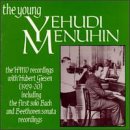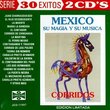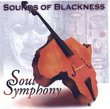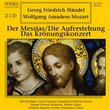| All Artists: Menuhin Title: Young Menuhin: The Early Hmv Recordings Members Wishing: 0 Total Copies: 0 Label: Biddulph Records Release Date: 8/17/1994 Genres: Special Interest, Classical Styles: Opera & Classical Vocal, Chamber Music, Forms & Genres, Concertos, Historical Periods, Baroque (c.1600-1750), Classical (c.1770-1830), Modern, 20th, & 21st Century, Instruments, Strings Number of Discs: 1 SwapaCD Credits: 1 UPC: 744718003228 |
Search - Menuhin :: Young Menuhin: The Early Hmv Recordings
CD DetailsSimilar CDs |
CD ReviewsMenuhin shortly after the very begining Discophage | France | 10/01/2008 (5 out of 5 stars) "In the early 1990s Biddulph published a series of CDs reissuing about all of Menuhin's early recordings. Menuhin made his first recordings on March 15 1928, not yet aged 12. That day he committed four short encores to 78rmp, by Fiocco, Achron, Monasterio and Ries. The next recording session took place on February 12 1929 with eight more pieces; his accompanist in both cases was his "beloved teacher" Louis Persinger. All except Bloch's Nigun (from Baal Shem) and possibly Samazeuilh's Chant d'Espagne were unsubstantial encores and tidbits, a mixture of the salon-sentimental, the Spanish folksy, the Jewish and the classical-virtuosic. All twelve were reissued on the companion disc of this one, Biddulph LAB031, with the substantial addition of Menuhin's slightly later (November 1931) and first Concerto recording, Bruch's, with the London Symphony Orchestra under Landon Ronald (The Young Menuhin: The Early Victor Recordings - Bruch: Violin Concerto No.1 in G minor, Op. 26 / other short works by Bloch {Nigun}, Spohr, Handel, Mozart, Achron, Fiocco, Ries, etc., see my review).
The present disc, Biddulph LAB032 features the next recordings of still young Menuhin (now 13 and ½), now with the German pianist Hubert Giesen (it's him you can see on the cover photo - he must have been 21 by then -, and I think it is Menuhin's father reflecting in the mirror. Giesen's main claim to fame is as an accompanist to Fritz Wunderlich). There is a little ambiguity as to when these sessions took place: on November 13 and December 11 1929 according to Biddulph's product info, but EMI published a cross-section of Menuhin's recordings of encores in the 1930s, which shares two pieces with this Biddulph disc (Novacek's Perpetuum Mobile and Rimsky's Song of the Bride) for which they give the date of December 11 1930 (Menuhin Plays Bazzini, Bloch, Dinicu, Granados, Kreisler, Moszkowski and Others). I'm inclined to believe Biddulph, both because it seems more consistent that all the recordings with Giesen should have been made within a couple of months, and because Menuhin obviously took part in the Biddulph reissues, contributing the liner notes with reminiscences on the works and recordings; and one assumes he would have known when the recordings were made. But then, Biddulph further blurs the issue by sub-titling the disc "The HMV recodings with Hubert Giesen (1929-30)". So? Anyway, Menuhin and Giesen recorded seven pieces together - and, besides the customary small encores (Corelli's La Folia is given with Enesco's cuts and ordering of the variations, and Menuhin plays the original version of Paganini's La Campanella), there is one more substantial one in this new batch: Beethoven's first Violin and Piano Sonata. Menuhin plays them all with insouciant charm. And speaking of substance: on the first of these two recording sessions Menuhin also made his first recording of a Bach Solo Violin Sonata: No. 3 in C, and it is here as well. In the liner notes Menuhin gives fascinating insights on how he performed the descending chromatic countersubject in the great Fugue, trying to play as close as possible to the value of the written half-notes rather than, as was customary practice then, as eighth-notes. Menuhin mentions only the Fugue, but in the opening Adagio as well he plays the lower lines as close as possible to the written values; I'm not familiar enough with modern performance practice of Bach's Sonatas & Partitas to know what is the custom these days, but Milstein, a recognized reference in these works, still played like what Menuhin describes as customary practice in 1929 - e.g. playing quasi staccato the long notes of the secondary lines - in his second recording in 1973 (Bach: Sonatas and Partitas for Solo Violin). But more striking still in young Menuhin's approach is the very slow (and not entirely convincing I find) tempo he adopts in the opening Adagio: compare his 5:55 to Milstein's 4:54 in 1953 and 4:21 in 1973 - or even to his own remakes (which I do NOT have in my collection - I've checked the timings here and there on the Net): 4:42 in 1934 (Bach: Sonatas & Partitas for Solo Violin), 5:05 in 1957 (J.S. Bach: Sonates & Partitas). In the Fuga, though, taken at a brisk tempo, one hears that the young violinist's grand mind is ahead of his small fingers, and as impressive a feat as it is for a 13 year-old, it doesn't make it an entirely pleasing listening experience. He displays fine dynamic nuance in the finale, and a level of digital fleetness that is at least equal to Milstein's in 1973 - but no match to Milstein's quicksilver frisk in 1953 (Bach: Sonatas for Unaccompanied Violin). TT is 69:08. As in the companion disc he transfers from 78rpms are by Ward Marston, a name associated with taste and quality. In the two shared pieces, the sonics are slightly more present than Andrew Walter's on EMI. But both are fine, really. As I concluded in my review of volume 1, this disc and its companion Biddulph releases (the next one, surveying mostly the year 1932, is Symphonie Espagnole), are indispensable for any music lover interested in the history of great violin playing. " |





